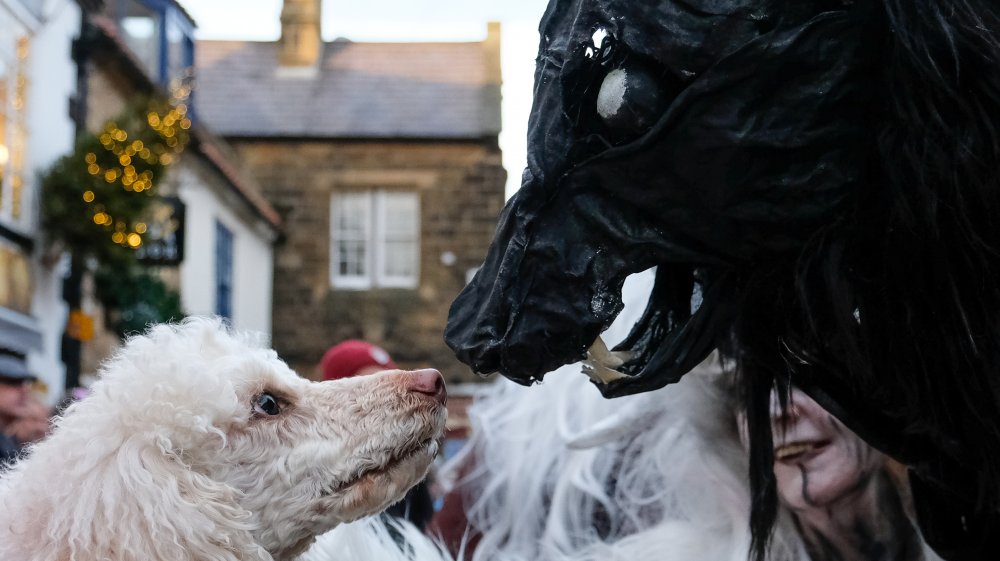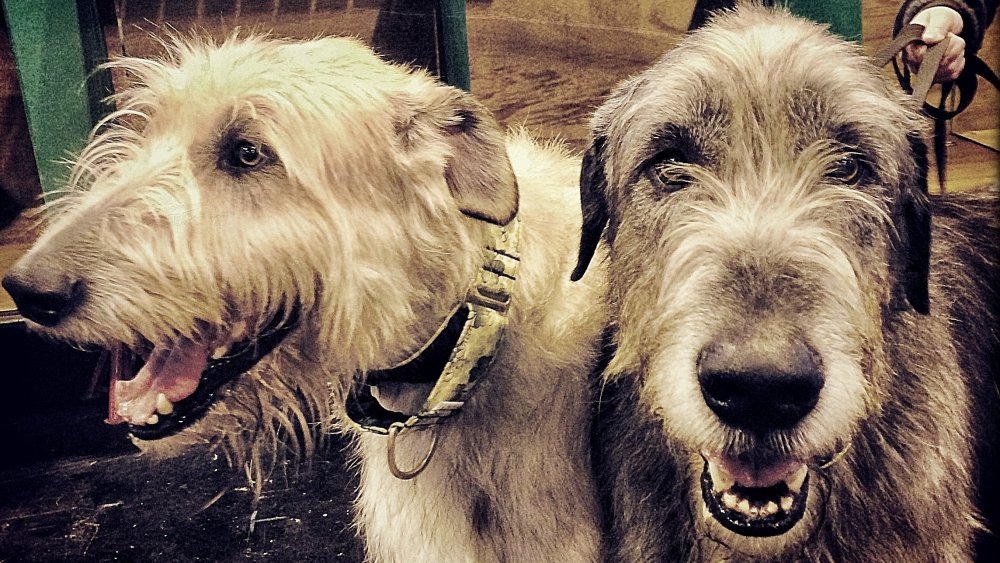The Dog Breed That Once Hunted Wolves
Dog breeding is a time-honored tradition, and these days, it's an artform largely dedicated to aesthetics. We like seeing how inside-out we can make bulldogs without killing them, and how two dimensional a greyhound can get before it slips through the cracks of reality. With the exceptions of a few working breeds like those narc German Shepherds at the airport, we make dogs more as sentient ornamentations than beasts of burden.
There was a time, however, when dogs were built with purpose. Necessity dictated that man's best friend go out and get a job, be it hunting, herding, or protecting, and in some parts of the world, they needed to take their line of work more seriously. Scarier predators meant needing scarier dogs to keep the literal wolves from the door.
Which brings us to Ireland, the British Isles' answer to the question "what if we made Australia but wet?" Up until the 18th century, Ireland had itself a wolf problem. Their solution: make bigger wolves.
The aptly named Irish wolfhound
The Irish wolfhound as we know it today is a facsimile of its ancient namesake, stories of which go back as far as the fourth century. The American Kennel Club and The Irish Wolfhound – A Complete Anthology of the Dog give varying accounts of the same story — in 391, seven massive Celtic dogs were gifted to the Romans to fight lions in the arena. Whether it's true or not is a matter of debate, but it remains clear that these Goliaths of the canine worlds have a long history of going full movie monster on both animals and humans.
The breed's calling card, as its name implies, was killing wolves. They were good at it. So good that, as the Irish Post points out, they had hunted their feral cousins on the island to extinction by the end of the 18th century. While they were still considered a status symbol, there just wasn't much point in maintaining a breed of dog that got bigger than most high school freshmen, and the Irish wolfhound was thought to have gone extinct by the mid-1800s.
A retired British army captain named George Graham spent years trying to bring the wolfhound back, but there were so few left of reputable lineage that he wound up crossing both his breeds and his fingers, hoping for the best. Thanks to his work, we still have six foot long, hunt-driven, living marionettes, but they tend to be more inclined towards getting scratchums than, say, slaughtering Gaelic werewolves.

